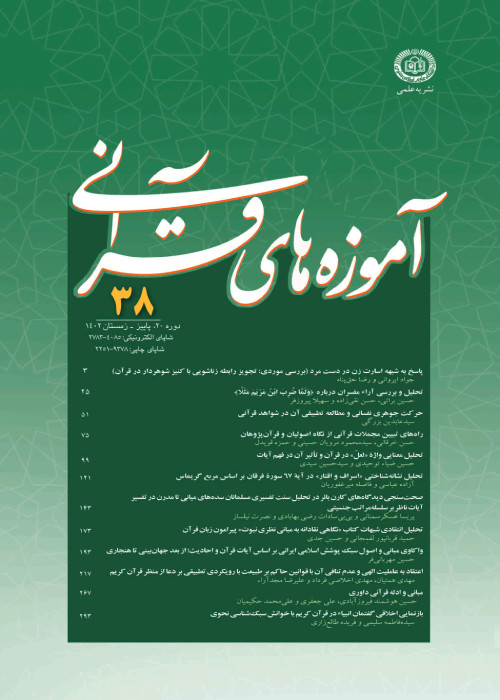The Comparative Discourse Analysis of the Text as the Comprehensive Assessment of the Holy Quran and the Quranic Studies; Case Analysis of the Verse 30 and 31 of Noor Surah and the Selected Exegeses
The comparative discourse analysis between the holy Quran and the Quranic studies can be employed as a comprehensive and methodological assessment. In this method with emphasizing the identical meter and trend of the Quran and the connected work can be judged that the general system (arrangement and order) of the work is in harmony with the general system of the holy Quran. In this paper the discourse of two verses 30 and 31 of surah al-Noor (Arabic: سوره النور) and some discourses of the contemporary exegeses with comparative form and with analytic-descriptive method has been investigated. Under two main categories “focus-word and the context of the selection of words” it has been studied the process of the structure of terms and then in the section of sentences and siaq (the linguistic sense; context) it has been surveyed the important existing discourse consideration in the text in comparative form. Lastly in the siaq of the men who are muʾmin (Arabic: مومن believer), the phenomenon of command without command and anaphoric role and indicative change has been seen and in the siaq of women who are believers it has been found the considerable cognitive scope (range) and at the last in the common part the cohesive role and the referential center has been observed.
-
Pathology of Quran's Translators Functions in Translating of the Conjunctions According to Conjuction Cohesion (Case Study: Fouladvand, Khorramshahi and Makarem Shirazi)
Seyed Mahdi Hosseini *, Seyed Hossein Seyedi
Translation Researches in the Arabic Language And Literature, -
Analyzing the Components of Cohesion in Surah al-Naba' Based on Halliday's Textual Metafunction Model
Ahmad Teymori Bazgari, Seye Hossein Seydi *, Ahmadreza Heydarian Shahri
Journal of Stylistic Studies of the Holy Quran,



